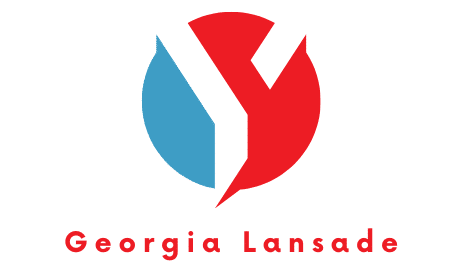The cultural symbolism of sports mascots around the world.

If you’ve ever attended a sports event, chances are, you’ve spotted a mascot amping up the crowd. These costumed characters, whether they’re animals, humans, or even mythical creatures, play more than just an entertainment role. They carry a symbolic weight that often represents the team’s identity and the region’s historical, cultural, or social significance. Today, let’s dive deep into the intriguing world of mascots and uncover the stories they carry on their plush shoulders.
Sports Mascots: More Than Just Entertainment
A sports event is never complete without a crowd cheering on the team, and right at the heart of this exuberant energy is the mascot. Mascots add a dash of fun, humour, and a high level of energy, entertaining the fans and creating a vibrant atmosphere.
Dans le meme genre : How do sports events contribute to raising awareness about global issues?
Mascots, however, are not just about fun and games. They often symbolize the spirit and personality of the team they represent. They may be derived from local folklore, indigenous animals, historic figures, or characteristics that the teams aim to embody. Thus, mascots become a significant part of a team’s brand, playing a crucial role in fan engagement and community relations.
For example, the American university sports teams are well-known for their mascots. At Stanford University, the tree mascot is a symbol of the El Palo Alto, a redwood tree which is a historic local landmark. On the other hand, the Nittany Lion of Pennsylvania State University draws from local legend about a mountain lion that once roamed near the school.
A voir aussi : The future of sports architecture and innovative stadium designs.
The Intricate Connection Between Mascots and Native Cultures
In many cases, mascots have also been derived from local indigenous or native cultures. This practice, however, has been a subject of controversy and social debate.
In America, many sports teams have mascots that are based off Native American imagery. Teams like the Cleveland Indians in Major League Baseball and the Washington Redskins in the National Football League have been criticized for their use of such mascots. Critics argue that these mascots perpetuate stereotypes and are disrespectful to the Native American people.
However, it’s worth noting that not all mascot usage of native imagery is received negatively. Hawaii’s University of Hawaii at Manoa’s mascot is the ‘Warrior,’ a symbol that holds significant cultural importance in Hawaiian society, and yet, it has been largely accepted. It shows that when mascots are thoughtfully chosen and respectfully represented, they can contribute to a greater understanding and appreciation of the native culture.
Mascots: Reflecting Social Changes and Movements
In recent years, the narrative around mascots has been evolving, reflecting larger societal changes. Many teams have made efforts to edit their mascots to ensure that they are inclusive and respectful of diverse cultures.
In 2020, following the Black Lives Matter protests, several American teams, including the Washington Redskins and the Cleveland Indians, announced they would be changing their names and mascots. This decision was welcomed by fans and the broader society, marking a significant moment in sports history.
Beyond race, mascots also reflect other social movements. For instance, some teams have started to include female mascots to promote gender equality. The introduction of ‘Blossom’ by the Manchester United Football Club as a companion to the existing male mascot ‘Fred the Red,’ exemplifies such a shift.
The Role of Technology in the Evolution of Mascots
Technology has transformed various aspects of our lives, and sports mascots are no exception. Thanks to advancements in digital technology, mascots are no longer confined to the sports arena. They have found their place in the digital world, engaging fans through social media platforms, video games, and even augmented reality (AR) experiences.
American teams have been pioneering in this aspect. For instance, the Philadelphia Flyers’ mascot, Gritty, has gained immense popularity on social media, with his hilarious antics often going viral. Meanwhile, the National Basketball Association (NBA) has integrated mascots into their NBA 2K video games, offering a more immersive experience for players.
The future of mascots looks undoubtedly exciting, with possibilities of AI-powered mascots or holographic mascots that could interact with fans in real-time. As technology continues to evolve, it will be fascinating to see how the role and representation of mascots change in the years to come.
Mascots in Different Cultural Contexts
While American sports teams have a rich history of mascots, it is important to note that the use of mascots is prevalent in other parts of the world as well. Each culture imbues its mascots with unique meanings and significance.
In Japan, mascots, also known as ‘Yuru-chara,’ are incredibly popular and are used by towns and cities to promote tourism and local culture. Similarly, in Europe, many football clubs have mascots that are often rooted in local folklore and tradition. One such example is ‘Billy the Badger,’ the mascot of Fulham FC in England, which represents the indigenous wildlife.
On a global scale, perhaps the most visible mascots are those of the Olympic Games. From ‘Waldi’ the Dachshund for the 1972 Munich Olympics to ‘Miraitowa’ and ‘Someity’ for the Tokyo 2020 Olympics, these mascots serve as cultural ambassadors, showcasing the host country’s culture, values, and aspirations.
In conclusion, sports mascots are more than just cheerleaders or entertainers. They carry a symbolic weight, telling stories about the history, culture, and values of the teams and the communities they represent. With changing societal norms and advancements in technology, the narrative around mascots continues to evolve, promising a fascinating future for these beloved characters.
The Controversy and Evolution of American Mascots
The subject of sports mascots in the United States has been a hotbed of debate, especially when it comes to those based on Native American imagery. Representations like the Cleveland Indians’ Chief Wahoo and the Washington Redskins have faced backlash for the perceived stereotypes and disrespect they present to Native Americans.
The American Indian community and its allies have rigorously protested against the use of such mascots. They argue that these caricatures of Native people reinforce harmful stereotypes and fail to respect the rich cultural heritage and history of American Indians. From high schools to professional sports teams, calls for change have been echoing across the nation.
However, this does not imply the complete elimination of mascots inspired by native cultures. When chosen with thought and represented respectfully, they can contribute to a greater understanding of indigenous cultures. One such example is the ‘Warrior’ from Hawaii’s University of Hawaii at Manoa, highlighting the significant warrior tradition in Hawaiian culture.
In recent years, there has been a shift towards a more considerate and inclusive approach to mascots. The Washington Redskins and Cleveland Indians made headlines in 2020 when they announced they would be changing their names and mascots, marking a significant moment in American sports history. This evolution is not limited to race but also other social movements like gender equality, with teams introducing female mascots alongside their male counterparts.
Mascots Around the Globe: From Japan to Olympic Games
While the use of sports mascots is widespread in the United States, it’s also a common practice around the world, each culture imparting its mascots with distinct meanings and significance.
In Japan, Yuru-chara mascots are used not only by sports teams but also by towns and cities to promote local culture and tourism. These mascots, often inspired by local wildlife or folklore, have become integral to Japanese culture.
In Europe, football clubs frequently use mascots that reflect local folklore or indigenous wildlife. Billy the Badger, the mascot for England’s Fulham FC, serves as a brilliant example of this trend.
On the global stage, the mascots of the Olympic Games perhaps hold the highest visibility. From ‘Waldi’ the Dachshund for the 1972 Munich Olympics to ‘Miraitowa’ and ‘Someity’ for the Tokyo 2020 Olympics, these mascots serve as ambassadors of the host country’s culture, values, and aspirations.
Conclusion
Sports mascots, whether at a high school game in North Carolina or an Olympic event in Tokyo, perform more roles than merely hyping up the crowd. They serve as cultural ambassadors, representing the history, culture, and values of teams and their communities.
The discussion around mascots has been evolving, reflecting societal changes and movements, from incorporating respect for Native American heritage to promoting gender equality. Technology’s role, particularly social media and digital platforms, has also expanded the reach and engagement of mascots.
While controversies have been part and parcel of the mascot tradition, it has ushered in changes that have led to more inclusive and respectful representations. As we move forward, it will be interesting to see how societal norms, technology, and creativity will shape the future of sports mascots.
